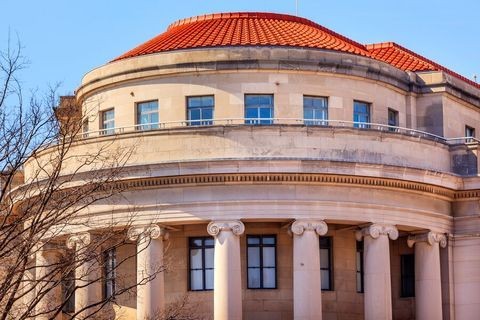Your Climate Disclosures or Your Contracts? Federal Contractors Face Unprecedented Proposed Rule for Mandatory Climate Disclosures
Client Alert | 3 min read | 11.11.22
In a major and largely unprecedented development for federal contractors, the White House announced on November 10, 2022 that the FAR Council will publish early next week a proposed rule that would, if finalized, require many federal contractors receiving more than $7.5 million in annual federal contracts to inventory and publicly disclose Scope 1 and Scope 2 greenhouse gas (GHG) emissions on an annual basis. Contractors deemed “major”—those that receive annual federal contracts in excess of $50 million—would be further required to disclose annually their Scope 3 GHG emissions and climate-related financial risk assessment process. Beyond disclosures, and perhaps more significantly, major contractors would also be required to set emission-reduction targets to meet the goals of the Paris Agreement, and have those targets validated by the Science Based Targets Initiative (SBTi). This last element of the proposal is a notable departure—and escalation—from similar pending proposals from the U.S. Securities and Exchange Commission, which only propose to require GHG disclosures from regulated companies and funds, not substantive goals or changes.
The rule would require that contractors employ four different standards in their reporting: (1) the GHG Protocol Corporate Accounting and Reporting Standards and Guidance; (2) the Task Force on Climate-Related Financial Disclosures’ 2017 recommendations and 2021 implementation annex; (3) the CDP’s Climate Change Questionnaire; and (4) the SBTi criteria.
The proposed rule would exclude certain types of contractors, such as state and local governments, higher-education institutions, tribes, and native corporations, from disclosure or target-setting requirements, and authorizes senior procurement officials to waive these requirements for national security and emergency considerations. Critically, small businesses exceeding the $50 million threshold would also be exempt from the additional annual climate disclosures and from setting science-based target requirements otherwise applicable to contractors with $50 million in federal contracts. Companies that do not comply with the relevant requirements risk being found “nonresponsible” pursuant to FAR Part 9, which could jeopardize the company’s ability to receive federal contracts. Should this proposed rule go into effect, the mandatory Scope 1 and 2 GHG emissions disclosure requirement would begin one year after publication of the final rule; whereas the enhanced compliance requirements for “major” contractors would only go into effect two years after publication.
The Administration is characterizing this proposal as a response to previous Executive Orders related to climate-related financial risk and federal sustainability efforts. (More about those can be found here and here.) The Administration also linked this proposal with recent supply-chain disruptions and explained that this rule, if finalized, would help the government shore up the federal supply chain and insulate it from climate-related financial risks. The proposal is scheduled to be published in the Federal Register on Monday, November 14, with a public comment period closing Monday, January 13, 2023.
Three Key Takeaways
- Under this proposed rule, many federal contractors receiving more than $7.5 million annually in federal contracts would be subject to mandatory climate disclosure requirements or risk losing valuable federal contracting opportunities.
- Many federal contractors exceeding $50 million annually in federal contracts would be further required to make enhanced climate disclosures and to set emission-reduction targets, or risk losing valuable federal contracting opportunities.
- This proposal emphasizes the need for federal contractors, especially those receiving more than $50 million annually in federal contracts, to consider their internal framework for monitoring and reporting GHG emissions and to seek guidance on how to meet these new requirements.
As federal contractors begin to unpack the proposed rule, Crowell’s team is ready to assist in evaluating the implications of this proposal and next steps going forward.
Insights
Client Alert | 11 min read | 05.17.24
FTC Finalizes Modifications to Broaden the Applicability of the Health Breach Notification Rule
On April 26, 2024, the Federal Trade Commission (“FTC”) announced a final rule (“Final Rule”) modifying the Health Breach Notification Rule (“HBNR”). The Final Rule, which largely finalizes changes proposed in a Notice of Proposed Rulemaking published last year (“2023 NPRM”), broadens the scope of entities subject to the HBNR, including many mobile health applications (“apps”) and similar technologies, and clarifies that breaches subject to the HBNR include not only cybersecurity intrusions but also unauthorized disclosures, even those that are voluntary. The Final Rule will take effect 60 days after its publication in the Federal Register.
Client Alert | 5 min read | 05.16.24
CMS Finalizes Contested Rule on Nursing Home Staffing and Facility Assessments
Client Alert | 3 min read | 05.15.24
Client Alert | 3 min read | 05.14.24





